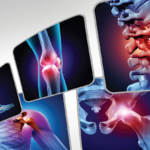Understanding the Diagnosis of Non-Radiographic Axial Spondyloarthritis
SAN DIEGO—For many decades, the entity of non-radiographic axial spondyloarthritis (nr-axSpA) did not officially exist because patients either met or did not meet criteria for ankylosing spondylitis, which was based on radiographs. In recent years, the recognition of nr-axSpA has helped identify the cause of back pain in many patients previously without a diagnosis. However, questions remain about how to avoid under- or over-diagnosing the condition. In the session titled, Pearls and Pitfalls in Diagnosing Non-Radiographic Axial Spondyloarthritis, several speakers provided high-yield insights on this topic.
A Conceptual Approach to Diagnosis

Dr. Hwang
The first speaker was Mark Hwang, MD, assistant professor of medicine, McGovern Medical School, UTHealth, Houston, who focused on a conceptual approach to the diagnosis of nr-axSpA. Historically, the modified New York diagnostic criteria for ankylosing spondylitis required radiographic changes—specifically grade 3–4 unilateral or grade 2–4 bilateral sacroiliitis—in addition to clinical criteria for a patient to be diagnosed with the condition. In 2009, the Assessment of SpondyloArthritis international Society (ASAS) developed classification criteria that coined the terms axial spondyloarthritis (axSpA) and nr-axSpA.
Using these criteria, patients with back pain of three months or longer duration and symptom onset before age 45 may meet criteria if they have 1) sacroiliitis on imaging (defined as definite sacroiliitis based on modified N.Y. criteria or active inflammation on MRI suggestive of sacroiliitis) with one or more features of spondyloarthritis, or 2) HLA-B27 positivity with two or more spondyloarthritis features. The features being referenced include, among other things, inflammatory back pain, enthesitis, dactylitis, psoriasis,or inflammatory bowel disease.1
When thinking about back pain in general, Dr. Hwang described a challenging dilemma: rheumatologists seek to identify features of inflammatory back pain in patients, but these findings are not entirely specific to inflammatory back pain alone. In addition, non-specific back pain is exceedingly common in the general population. Thus, how should clinicians approach this topic? One method is to apply Bayesian analysis, which in essence relies on the sensitivity and specificity of a test or set of tests combined with positive and negative likelihood ratios.
If we assume that a test, such as radiographs of the sacroiliac (SI) joints, has a set sensitivity or specificity for detecting sacroiliitis, then these can be combined with the likelihood ratios associated with characteristics of the patient in order to calculate the odds of axSpA being the correct diagnosis. Thus, two patients—a 35-year-old man with five years of back pain that is associated with two hours of morning stiffness and a 45-year-old man with three months of back pain that causes 15 minutes of morning stiffness—would be regarded as having different odds of axSpA even if their imaging findings are identical.


